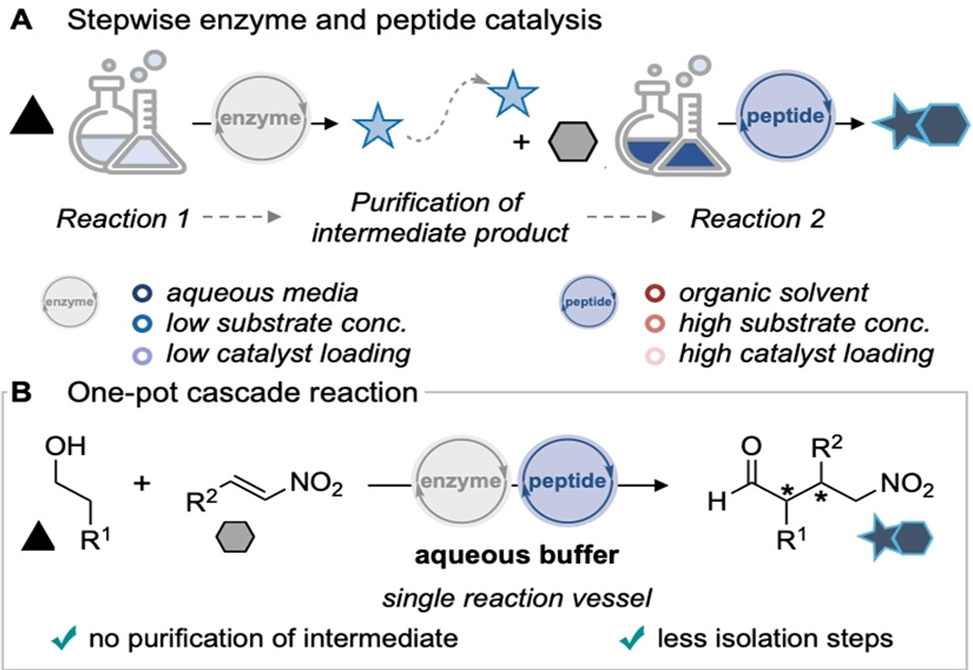APS Research & News
Peptide & Enzyme Catalysts
This article reflects work in the Wennemers Lab
Enzymes and peptide catalysts consist of the same building blocks but require vastly different environments to operate best. Published in Angewandte Chemie, Intl. Ed., researchers in the Wennemers lab show that an enzyme and a peptide catalyst can work together in a single reaction vessel to catalyze a two-step cascade reaction with high chemo- and stereoselectivity.

An enzyme and a peptide catalyze—in an aqueous buffer—a two-step cascade reaction with high chemo- and stereoselectivity in one pot. The optimization of the modular peptide catalyst and the identification of common reaction conditions were key for bringing the two worlds of enzyme and peptide catalysis together.
Abundant linear alcohols, nitroolefins, an alcohol oxidase, and a tripeptide catalyst provided chiral γ-nitroaldehydes in aqueous buffer. High yields, up to 92%, and stereoselectivities, up to 98%ee, were achieved for the cascade through the rational design of the peptide catalyst and the identification of common reaction conditions.

Published here on April 25, 2024
Title: Peptide and Enzyme Catalysts Work in Concert in Stereoselective Cascade Reactions—Oxidation followed by Conjugate Addition
Authors: Dr. Jasper S. Möhler, Dr. Mathias Pickl, Tamara Reiter, Stefan Simić, Jonas W. Rackl, Prof. Dr. Wolfgang Kroutil, Prof. Dr. Helma Wennemers
Citation: Angewandte Chemie, International Edition Volume 63, Issue 12, March 18, 2024